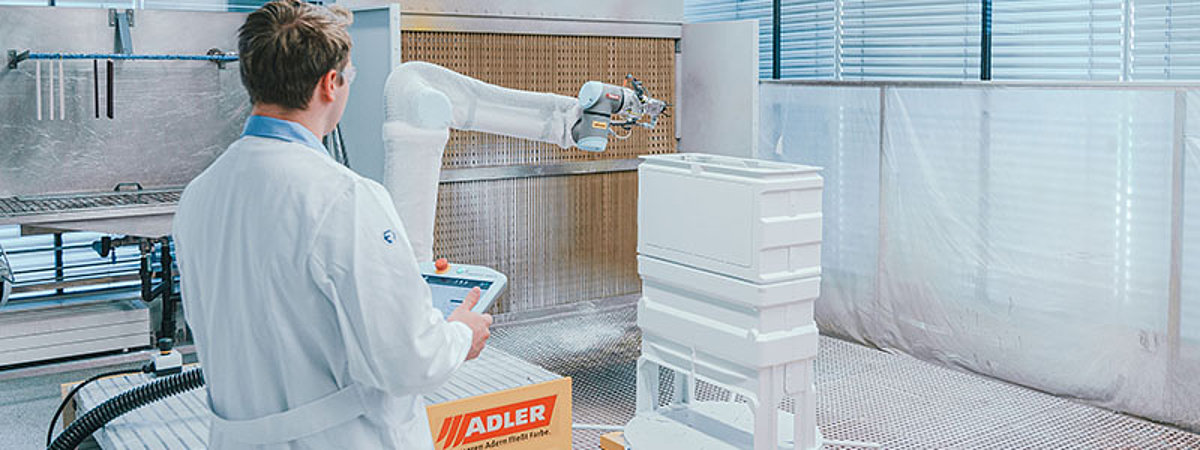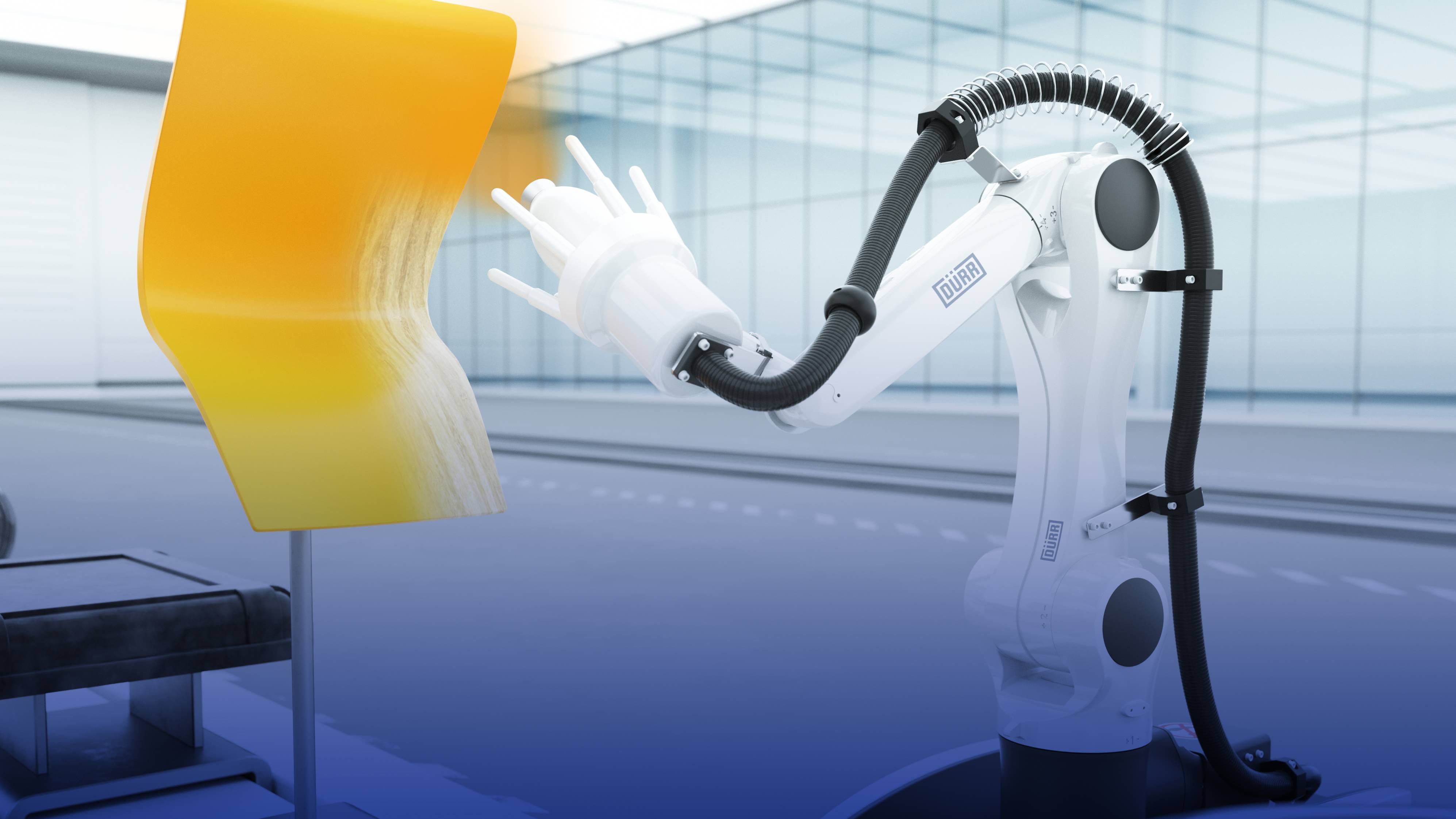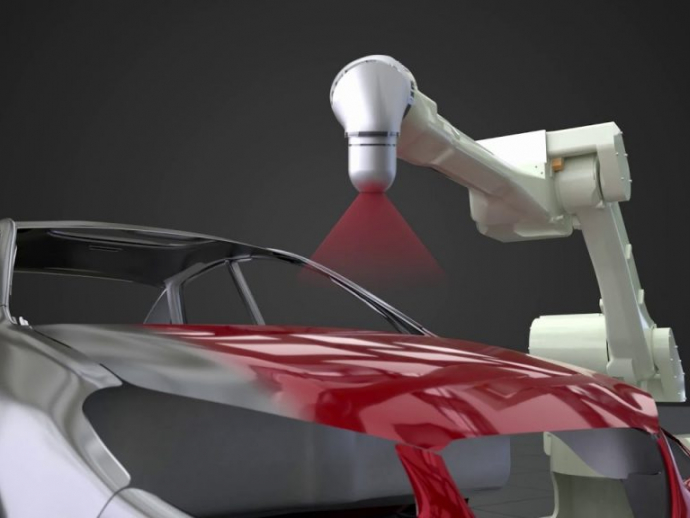So, you’re ready to invest in a robot to handle your painting applications. Great idea - robot painters can save you time, improve consistency, and reduce waste. But with so many options out there, how do you choose? Whether you need a robot for automotive painting, aerospace coating, or general industrial applications, there are a few things to consider.
Do you need a robot that can handle multiple coats in one cycle or one that can maneuver tight spaces? What about the type of paint - can the robot you’re eyeing handle solvent-based, water-based or abrasive paints? And of course, you’ll need the right end-effector or paint applicator for your needs. In this article, we’ll explore the various robot paint options on the market, the pros and cons of each, and tips to help you find a robot painter perfect for your needs. Painting with robots is the way of the future, so let’s dive in!
Advantages to Painting Robots
The benefits of using painting robots include:
- Uniformity of coating - robots can move at a constant speed far better than a person and thereby ensure an even coating
- Precision of application - the robotic painting arm moves with great accuracy. The position of the robot will be much more precise and repeatable than with a human painter.
- Speed (as much as 30 times faster than manual methods)
- Keeping workers safe from harmful fumes and chemicals
- Reduced cost by minimizing the amount of wasted coating
Types of Painting robots: Articulated, SCARA, Cartesian, and Collaborative
Choosing a type of robot is the first step in automating a painting process. The one that’s right for your production line depends on factors like the size and shape of the parts you need to coat, how fast you need to apply paint, and your budget.
Articulated robots, most commonly Six-Axis robot arms, are versatile and ideal for painting large or complex parts. Their multiple joints and rotary axes give them a wide range of motion so they can paint hard-to-reach areas. However, they tend to be the most expensive type of robot.
SCARA (Selective Compliance Assembly Robot Arm) robots are more affordable and compact. They’re best for simple painting tasks on small to medium-sized parts with flat or only slightly curved surfaces. While SCARA robots can’t handle as much weight or reach as far as articulated robots, their streamlined design means they work fast and precisely.
If you’re on a tight budget, consider a Cartesian robot. These simple but sturdy robots move along three linear axes (X, Y, and Z) and require little programming, so they’re ideal for basic painting large flat parts in simple strokes (such as roller painting). Though limited in motion, Cartesian robots are low-maintenance and have minimal upfront costs.
Collaborative Painting robots are the latest innovation. They’re designed to work safely alongside human workers, so they don’t require cages or barriers. Collaborative robots tend to be more expensive than traditional industrial robots but offer greater flexibility.

No matter which type of robot you choose, be sure to select the proper end-effector (like a spray gun applicator) and programming to suit your specific painting needs. With the right equipment and setup, robot painters can achieve higher quality, consistency, and productivity than human workers alone.
How Painting Robots are Mounted
The four main ways of installing painting robots are:
- Floor - takes up the most space but is easiest to integrate into a painting booth.
- Ceiling - requires less space than floor mounting but is more complicated and expensive.
- Wall - also takes up less floor space than floor mounting. Care must be taken to accommodate the dynamic forces.
- Rail or Overhead Gantry - enables the painting robot to move back and forth over large distances. Can paint exceptionally large objects like airplanes, trucks, and railroad cars.
Technologies Used to Apply the Coating
Painting robots use different methods of turning the paint or coating into a fine mist. This is important for an even application. Here are the most common technologies used:
- Air spray - a stream of air is mixed with the coating to break the fluid into fine droplets. Most common for paints.
- Ultrasonic spray - an atomization surface vibrates at an ultrasonic frequency. The coating hits the vibrating surface and is turned into a fine mist. Used to apply insulation and conductive films on small products. Other uses include anti-glare coatings, photoresist, and various coatings with special properties.
- Electrostatic - the coating fluid is charged with thousands of volts of static electricity in the nozzle. Electrostatic repulsion turns the liquid into a mist. The mist is attracted to the surface to be coated by an opposite electrical charge. With this method, an even coating can be applied to uneven surfaces. The efficiency is remarkably high, with little paint wasted.
What painting tasks can robots perform?
When it comes to painting applications, robots can handle a variety of tasks. Here are some of the major ones:
- Automotive painting: Robots are widely used to spray paint vehicle bodies and parts. They can apply primer, base coat, and clear coat efficiently and consistently. The most common end-effectors (the tool attached to the robot) for this are rotary atomizers, which spin at high speeds to apply an even coat.
- Industrial coating: Robots are also employed for applying protective or decorative coatings to fabricated metal products, plastics, wood, and other materials. Tasks include powder coating, electrocoating, and conventional liquid spray coating. The end-effectors depend on the coating method, e.g. powder coating uses a powder spray gun.
- Surface finishing: Some robots can buff, polish, sand, or grind surfaces to prepare them for painting or just to improve appearance. The required end-effectors are spinning abrasive pads, sanding disks, or polishing wheels.
When determining if a robot is right for your painting needs, consider the shape and size of the parts, required finish quality, and production volume.
With the latest robot models, painting has become an automated process that increases productivity and minimizes environmental impact. The future is bright for the collaboration between humans and machines in industrial coating applications.
End-effectors and tooling for Paint robots
The term ‘end-effector’ refers to the tool attached to a robot. You may also hear the colloquial term “gripper” or the painting-specific term “paint applicator”.
Spray guns
The most common end-effector for Paint robots is the spray gun. These can be electrostatic, HVLP (high volume low pressure), or air spray guns. Electrostatic spray guns apply an electric charge to the paint particles, which then adhere better to the grounded workpiece. HVLP spray guns use high-volume, low-pressure air to apply paint more efficiently with less overspray. Air spray guns utilize compressed air to atomize and spray the paint.
For most industrial painting applications, spray guns allow the robot to achieve a high-quality, uniform finish. They do require periodic cleaning and maintenance to prevent clogs and ensure an even spray pattern. The type of spray gun used will depend on the specific paint and application requirements.
Rotating atomizers
Rotating or spinning atomizers, also called rotary atomizers, are end-effectors which utilize centrifugal force to break up paint into very fine droplets. They can achieve a smoother, more consistent finish than spray guns and reduce overspray by up to 95%. However, they require paint with a viscosity in a certain range to work properly. Rotating atomizers are often used for high-quality automotive and wood finishing applications where surface finish is critical.

Roller applicators
For some painting tasks, rollers can be a good option and work well with simpler robots like Cartesian robots. Roller applicators allow the robot to dip into a paint tray and then apply the paint to large, flat surfaces using a roller. This works well for walls, doors, and other areas where small imperfections in the finish are acceptable. Rollers reduce paint waste since they do not produce overspray like spray guns. However, they may require multiple passes of the robot to achieve an even coat and can only be used with paints of suitable viscosity for rolling.
In summary, the end-effector you choose for your Paint robot should match the specific requirements of your application and work with the types of paint you need to apply. Conducting tests with different options on your parts is the best way to determine the optimal solution.
Other considerations when selecting a Paint robot
Programming and integration
Some Paint robots allow inline programming, where you manually move the arm through the required motions, recording the movements to be repeated. Others require coding by a robotics specialist. The robots with the best blend of user-friendliness and flexibility come with software which lets you program the robot's movements on a computer without prior coding knowledge. How easily can the robot integrate into your existing production line? Check if it uses standard relay interfaces to communicate with your other equipment.
Manufacturer support
Look for a reputable robotics company that provides strong customer support. They should offer operator training, help configuring the robot for your needs, and continued service after installation. You’ll also want to ensure the company is local enough to be able to deliver spare parts quickly when required and minimize downtime.
Choosing the right Paint robot for your needs will ensure high quality, consistent results and a good return on your investment. Analyzing the factors that matter most to your specific painting application will help guide you to the optimal robot for the job.
Conclusion
So there you have it, a quick rundown of the robot types and options out there for your industrial painting needs. Whether you need a simple spray gun mount or a fully automated multi-axis system with conveyors and multiple types of industrial coating, there’s a robot ready to get the job done. Do some research on your specific application and production requirements, check out reviews of different brands, and make sure you understand the pros, cons and costs of each option. The right Paint robot is out there, you just have to find the one that fits your needs and budget. With the variety of robots available today, you can achieve great results and maximize efficiency. So good luck finding your new paintbot partner in crime!
Major manufacturers of Paint robots
- ABB: ABB stands out as a global leader in robotics, offering a diverse range of industrial robots suitable for various painting applications. Their IRB series, including models like IRB 5500, IRB 6700, and IRB 7600, are renowned for their precision, speed, and reliability.
- KUKA: KUKA is another prominent name in the robotics industry, providing innovative solutions for painting automation. Their KR series features robots equipped with advanced technology to deliver high-quality finishes across different industries.
- YASKAWA: Yaskawa Motoman specializes in manufacturing industrial robot arms, including models tailored for paint spraying and coating. Their DX series, such as DX100 and DX200, are known for their speed, flexibility, and durability, making them ideal for demanding painting applications.
- FANUC: FANUC, a renowned Japanese robotics company, offers a wide range of painting robots designed for automotive painting lines, aerospace applications, and more. Their P-series robots, including P-200, P-250, and P-350 series, excel in precision and efficiency.
- DÜRR: Dürr is a leading provider of painting and assembly systems, offering comprehensive solutions for automotive and industrial applications. Their painting robots, integrated with advanced control systems, ensure consistent and high-quality finishes while optimizing production processes.
- COMAU: Comau is recognized for its innovative robotic solutions designed to enhance manufacturing efficiency. Their painting robots, such as the NJ and Racer series, combine precision, speed, and versatility to meet the evolving needs of various industries.
- CMA Robotics: CMA Robotics specializes in developing custom robotic solutions for painting and surface treatment applications. With a focus on innovation and customization, they offer tailored solutions to optimize painting processes and maximize productivity.
- Universal Robots: Universal Robots, a pioneer in collaborative robotics, provides flexible and user-friendly painting solutions suitable for small to medium-sized enterprises. Their collaborative robots offer easy integration and programming, making them ideal for a wide range of painting tasks.
- B+M Surface Technology: B+M Surface Technology specializes in surface treatment and coating solutions, offering state-of-the-art robotic systems for painting applications. Their expertise lies in providing customized solutions tailored to meet specific customer requirements.
- Techman Robotics: Techman Robotics focuses on developing collaborative robots equipped with advanced vision systems for painting and surface finishing tasks. Their robots offer intuitive programming and seamless integration, enabling businesses to streamline painting processes with ease.
Did you like the article from AutomationExpo.com? Please follow us on Linkedin
Would like you like to present your company and exhibit on our leading online 24/7 industrial automation and robotics platform?
